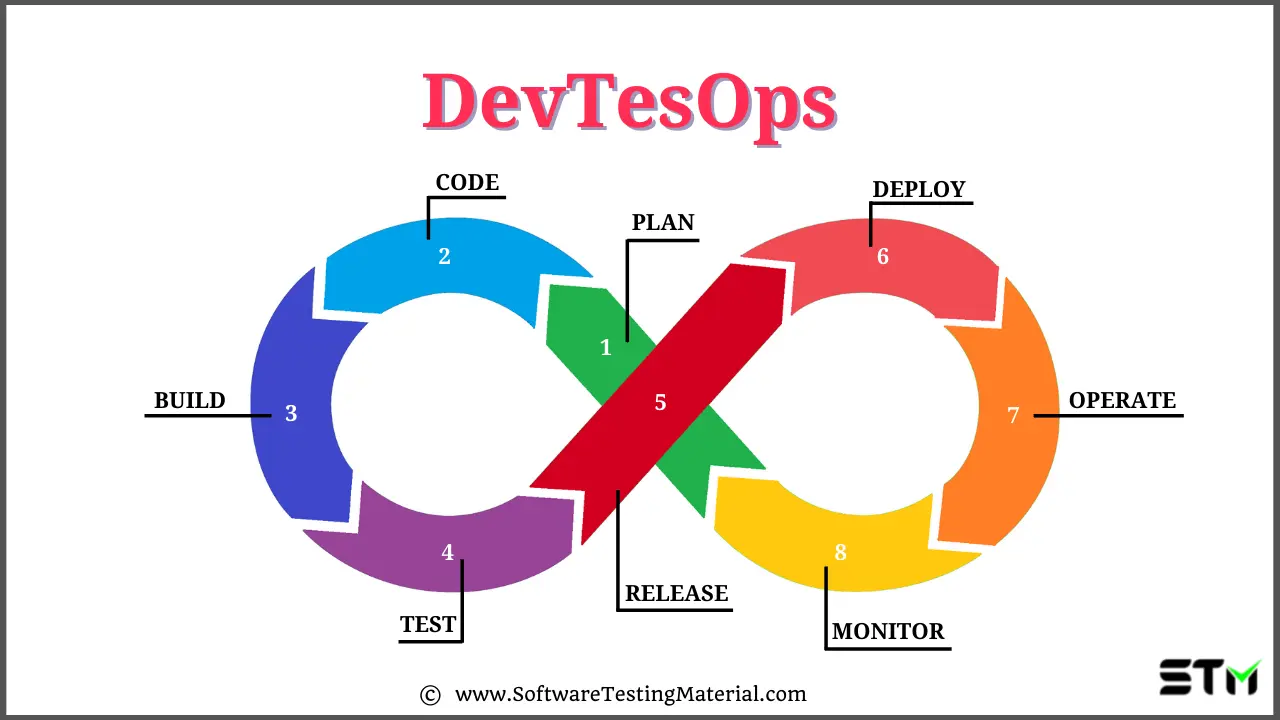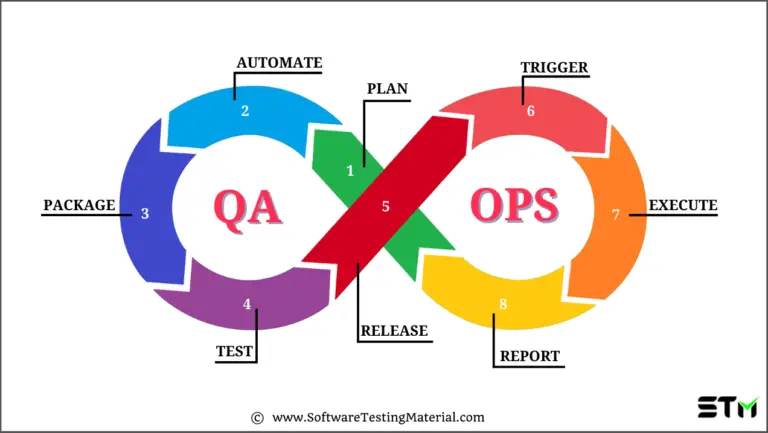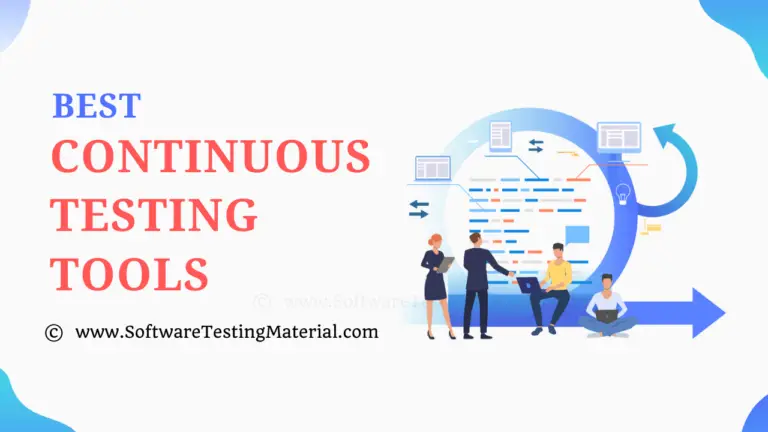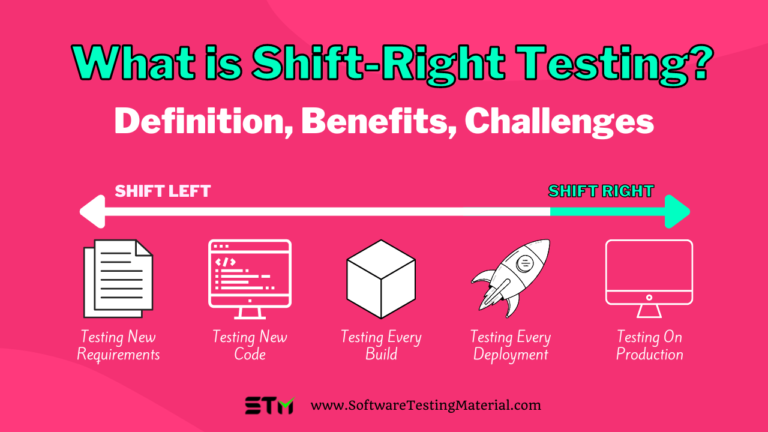What Is DevTestOps? Process, Implementation & Benefits
Over the years, the entire concept of software development has changed.
Especially, the rapidity and need for digital transformation have made way for the transition of organizations.
The transition involves the evolution of development practices and test methodologies like the adoption of the agile model and tools that can enhance the deliveries and overall user experience.
Another interesting aspect of the digital transformation is the introduction of new processes that have elevated the quality benchmarks related to software development.
From shift-left testing to continuous testing, CI/CD, and DevOps, things have changed for the better, allowing frequent and quality-rich releases.
However, when developers and testers were working collaboratively on integrating all these processes and methodologies into the picture, the DevTestOps came into the picture as it worked the need for testing throughout the delivery pipeline.
Since DevOps showed up as a solution to implement agile by cutting all the redundancy on Development and Operations, Quality Analysts found the need for more attention to the quality of releases.

DevTestOps was therefore introduced to work on continuous testing at every stage of development along with DevOps.
In other words, DevTestOps is used as a practice to foster continuous feedback on quality throughout the software development lifecycle.
In this blog, we will aim to highlight all the details related to DevTestOps, right from its definition to its purpose.
While giving insights on DevOps and Continuous testing, the blog will underline the need for adopting DevTestOps, the best practices, the tools, and everything that can help streamline the continuous quality model.
Let’s begin!
DevTestOps: The Definition
In its simplest form, DevTestOps is a combination of Continuous testing and DevOps, as DevOps alone has its focus on development and operations.
Also, DevTestOps can be defined as an approach to testing that contains the qualities of Continuous testing and DevOps, which ultimately helps to test often and at the earliest.
More importantly, DevTestOps allows quick releases with more reliability allowing developers, testers, and operation engineers to come together on their way to quality development.
DevTestOps, therefore, helps to locate software issues throughout the development reducing the business risks and early detection of errors that might hamper the output.
Also, DevTestOps is meant to improve the tester’s visibility on the project enabling continuous improvement through various stages of the development lifecycle. These include:
- Product Management: To capture and list requirements for a feasibility check.
- Software Development: This stage involves analyzing the requirements to pursue design and development along with unit testing.
- Test Management: To analyze system specifications for validating system effectiveness for executing test cases.
- Continuous Integration: To merge the code changes in the central repository for running the automation suite.
- Continuous Deployment: To ensure that the developer software components can be released with maximum efficiency.
- Continuous Monitoring: To get feedback on the application in production related to usage patterns while measuring performance in the production environment.
How DevTestOps Work?
DevTestOps brings the best out of DevOps and Continuous testing, with a broader objective of meeting the agile testing goals.
More importantly, DevTestOps has enabled testers to have a more prominent role in the development lifecycle.
Also, the approach has enabled more streamlined and error-free development, making way for all kinds of testing to flow in along with automation.
Some of the types of testing that can be included as a part of DevTestOps could be listed as follows:
Exploratory Testing: Exploratory testing works by involving testers that have a similar experience in testing the application. The process focuses on determining application loopholes that would have been skipped during test case writing or during the test process.
Manual Testing: Automation is not easy to pursue without manual testing. Especially when you need to ensure stable automation, it is not feasible to automate all the tasks completely. Overall, manual testing is an extremely crucial part of all-around application testing and therefore adds great value to the entire process of DevTestOps.
Ad-Hoc Testing: Ad-Hoc testing in practice is a very informal approach to testing as it does not involve any specific test cases. Thus, Ad-Hoc testing works by breaking the system to explore all the errors that are likely to get undetected with formal testing methods. The process, therefore, involves testing applications randomly in no specific order.
Automation Testing: last but not least, any tasks that take more time and are repetitive in nature must be automated to ensure easy daily execution. Also, automation testing could even aid testers in saving time and keeping a check on all the important functionalities of the application while automation works on routine tasks supporting the continuous testing goals of the DevTestOps.
Why To Leverage DevTestOps?
While DevOps aims to work to increase the collaboration between developers and operation teams, the goal of all DevTestOps is to include continuous testing in the DevOps process.
In simple words, when continuous testing is merged with DevOps, it is called DevTestOps.
Also, when we say continuous testing, it means that there is more focus placed on starting the testing process right from the requirement consideration and continuing it through the production and monitoring phase.
The ultimate motive of DevTestOps is to test as often as possible and automate the process, saving time and effort for developers, testers, operators, and other team members.
Why should a company adopt DevTestOps?
It helps in increasing quality
As mentioned, testing is done at an early stage, and it’s even done more often; therefore, bugs are found faster and ultimately can be fixed more easily in each stage of the development process.
In this way, the amount of time taken to find a bug and then fix it is tremendously reduced following the DevTestOps approach by the developers and testers.
Fuelled collaboration
In DevTestOps, it is important to be effective in terms of different roles in the teams working out together as a single unit. Moreover, there is the inculcation of constant communication to ensure that the features work accordingly.
Automation and Automation
In this approach, everything is automated to save time. Initially, it can take a good amount of time for a setup, but once it’s done, it is all worth it. It helps drastically reduce the manual effort which is needed for performing time-consuming tasks. In this way, the teams work to ensure new features do not break existing ones.
A Much Faster Feedback
In each stage of DevTestOps, the teams get continuous feedback about the features that are being used in the various processes. You also get feedback about tools and communication channels that are much needed for a successful DevTestOps implementation.
Faster Delivery
Aiming to improve the speed of releases, and as mentioned earlier, bugs are also fixed at an early stage. Therefore, one can respond to the client’s needs faster and gain an edge over the competitors. In DevTestOps, automated builds and deployment can help accelerate the process, thereby avoiding any sort of human error and dependency. In this kind of approach, the tester also becomes an equal owner of the product as a developer, so it includes a greater chance of involvement.
What Are The Best Practices For DevTestOps?
- Choosing the right tools and frameworks in each phase of the delivery pipeline can help in improving software quality and speed of delivery.
- One of the key factors and practices that will help in the successful implementation is to automate as many processes as possible so that one can save time and get faster feedback. For example, a team can use and include automating build deployments and automated rollback mechanisms in case of any problem.
- Continuously monitoring the pipeline that includes the development, testing, and deployment of the feature can also help in the effective implementation of DevTestOps. It is really important to monitor this pipeline so as to overshadow the problems as quickly as possible when there are any sort of failures.
- For establishing a successful Structure of DevTestOps, the testing team should be fully aware. They should understand the time, effort, and cost involved at the beginning to set up the pipeline. However, once it’s done, then there is no better way out.
How Is DevTestOps Different?
In broader terms, DevTestOps is a process that is meant to overcome the fallbacks involved with existing processes like DevOps and QAOps.
It does not adds continuous testing to the picture but amalgamates with DevOps and QAOps to improve the overall software development life cycle.
Here’s how DevOps and QAOps could be differentiated from DevTestOps:
DevTestOps & DevOps
When it comes to establishing the difference between DevTestOps and DevOps, DevOps comes as a practice that is meant to automate the manual operations.
More importantly, DevOps is meant to ensure faster delivery of products as it streamlines the development and operations.
However, working alone on DevOps is likely to create gaps in the process of bug identification and sticking to product requirements.
DevTestOps & QAOps
QAOps comes as a progressive part of DevOps and works on integrating quality into the delivery process.
Since DevOps mostly focus on the development and operational aspect of the software development lifecycle, QAOps aim to work on the quality factor.
In simple words, QAOps works at pinning QA at the core of the delivery chain.
DevOps calls for the development and operations team to function as a single unit aimed at delivering business value across the value chain.
In QAOps, the main thrust is to ensure the quality of the application in terms of its performance, scalability, functionality, security, and usability, among others.
Must Read: QAOps vs DevOps
Role Of DevTestOps
Here comes the role of DevTestOps. With the objective to aid continuous testing, DevTestOps cuts off all the chances of overlooking any risks.
DevTestOps brings the best of development, testing, and operations together, nullifying any chances of skipping any bugs or business scenarios for a product.
All in all, DevTestOps is an advanced approach to DevOps which was introduced to infuse continuous testing into the delivery pipeline.
Moreover, the benefit it brings in regard to business risks and defects makes it a much more essential aspect of business operations strategy.
DevTestOps: The Pros & Cons
Just like it is not easy to always pursue automation, integrating DevTestOps at all phases of the development cycle can create some negative impact.
Here are some pros and cons that must be necessarily considered by the testers when working to implement DevTestOps.
Pros
- No or minimum manpower is required for deployment and testing due to automation
- CI/CD automation allows time-saving
- Testing and deployment are a one-click process
- Minimum deployment errors
- Quick error debugging.
Cons
- Outsource infrastructure need access to special development expertise
- Compatibility issues may appear while imitating the production environment
- Security is one of the most important concerns with DevTestOps.
Continuous Testing As A Vital To DevTestOps
When it comes to continuous testing, the process involves continuous development of the code while fostering continuous delivery, testing, and deployment.
The testers usually aim to explore the requirements, driving more value to the delivery pipeline by constantly working in sync with the development team on all the potential risks and process feedback.
Besides, continuous testing can also be understood as the uninterrupted execution of automated tests. It comes along with the software delivery process and therefore facilitates rapid feedback on business changes related to the product.
Ultimately, it contributes to overcoming any business risks at the earliest stages of SDLC.
Continuous testing enables testers to work through the software development lifecycle by testing the code. It overcomes all the gaps between testing, development, and operations. More importantly, the DevTestOps approach to continuous testing allows end-to-end automation to dive into integrating it with QA. The process, therefore, helps to address all the challenges related to the development cycle quickly without affecting the continuity of development.
All in all, continuous testing as an aspect of DevTestOps is a practice with huge scope. From validation of functional aspects to working on non-functional requirements, aligning it with the SDLC could drive great outcomes. From checking on APIs to unit, integration, and system testing, Continuous testing offers all the automation advantages to nurture great software within the simulated environment.
Need For DevTestOps: Learning How Continuous Testing Enables DevTestOps
When continuous integration is done along with Continuous Delivery and Continuous Deployment, the process makes way for DevOps. However, enabling DevTestOps require testers to step in and work on integrating continuous testing into the already existing setup of CI/CD and continuous integration.
When we say DevTestOps, the process accommodates testers as a highly significant part of the development process. Be it deliveries or deployment. It allows testing feedback to flow in continuity at every step. Also, testing implemented at every stage is done through automation, driving value to the software development lifecycle, making way for the following improvements:
- The early detection of the defects and errors allows easy fixing. The process, therefore, aids in more streamlined and timely delivery of the software.
- DevTestOps reduces the span of the regression cycle, cutting the time from weeks to hours allowing automation to push quality forward.
- The collaborative environment that involves developers and testers allows for an improved understanding of the project modules, ultimately complementing the product outcomes.
- DevTestOps and automation allow testers to work on all kinds of testing, complimenting every phase of product development.
- The testers have equal involvement in the development process, allowing equal ownership of development as of developers.
- Last but not least, build and deployment empowered through automation adds more rapidity to the process by resisting any potential human errors and reducing overall dependency.
Continuous Testing For Enterprises: Tools Available
Multiple types of testing can be covered in DevOps, such as unit, system, integration, end to end, performance, security, cross-platform, multiple platforms, responsive, and API testing.
Also, there are multiple continuous testing solutions in the market. These are tools that automate one or more test activities right from planning, requirements, creating a build, test execution, defect logging, and test analysis.
As a thumb rule, look for tools that enable easy automation and also support integration to continuous testing.
Below are a few tools that can be considered:
Some tools that can support automation and the larger DevTestOps are:
- Automation Testing Tools: Gives opprotunity to testers to create and execute automated test cases. Example: Selenium, Appium, or Katalon Studio
- Version Control Tool: Allows us to track the changes made in the codebase. Example: GitHub
- Automatic Code Deployment Tool: Allows to deploy codes on daily basis automatically without manual intervention. Example: Jenkins
- Configuration management Tool: Allows us to configure, manage, and deploy various kinds of services and applications to the system. It ensures the application and computer system are used consistently. Example: Chef, puppet
- Ticketing Systems Tool: Allows us to raise issues and track their statuses. Example: ALM, Jira
- Monitoring and Provisioning Tool: It maintains the system in large quantities clustered all across the globe. This tool maintains both the hardware and software infrastructure in a homogenous state. Example: Vagrant
DevTestOps: A New Way To Achieve Agile
DevTestOps, as a part of the software development lifecycle, has changed the way products are developed. In other words, DevTestOps has completely redefined the traditional approach to development.
For instance, the conventional SDLC used to work on testing only after the entire part of the development was complete. The approach, therefore, used to cause delay creating major drawbacks to moving inside the SDLC. One of the most prominent issues involved the detection of bugs at the later stage, which caused delayed release of the product extending the time for fixing issues. Besides, identifying issues and working on them when all the codes and builds are merged makes it tough to isolate the functionalities and overcome the issues.
Nevertheless, when we work on DevTestOps, the process involves testing the application right from the beginning of the development. The testing is then worked from all the stages of development to the production, enabling developers and testers to have immediate feedback on product functionalities. Besides, it even allows developers and other stakeholders to get over any defects right away, complementing the project timeline and cost of fixing.
Overall, DevTestOps has worked in breaking the walls that separated operations for developers and testers. Rather it has made all the departments come together in the process of product development, transferring the product ownership to all the teams and not any specific team. This ultimately allows Agile to grow while making people give their immediate effort to make better products, cutting off any latencies that otherwise would have left with conventional practices.
DevTestOops to DevTestOps: A Boon To Agility
Since Agile is the future of development and testing approach, DevTestOps compliments all the aspects of going agile. This is why it has turned out to be a choice for all the organizations progressing towards their goal of digital transformation.
A quick example of the same could be taken from Spotify, one of the leading music streaming applications with an expected user base of 286 billion. Spotify has not only managed to be the largest but most popular streaming application. Thanks to the agile approach and consistent efforts made to integrate DevTestOps.
To be precise, the DevTestOps model implemented at Spotify is very well-established when it comes to communications and internal networking amongst teams. From developers to testers, the operations involve a high-end approach to testing that allows quality to flow at every end of the product.
Making DevTestOps A Success
In other words, making an effort on DevTestOps and preventing it from turning into DevTest-Oops! Need developers to integrate CI into the process of developing new features. Whether it is the personalization of the application or testing code iterations, it must be seen as an opportunity to overcome errors.
Such an approach allows developers and testers to quickly work any changes to the build long before the deployment. The practice ultimately helps in improving the confidence with the product under development, preventing any odds of moving in as all the errors are worked ahead of time.
Apart from this, the Quality Analysts and testers who need to align modern practices like Agile and DevOps to work could only be done when test scenarios are made to work on every aspect of functionality under build. Be it a non-clickable button or errors that are likely to occur when users are aiming at a particular task, QAs must focus on all the major and minor code fixes to prevent internal complexities.
Making The Most Of Continuous Testing
On top of that, continuous testing that comes with DevTestOps allows monitoring and handling of larger data with much ease through automated log parsing. Therefore, the ease of handling log files that comes with continuous integration and continuous testing happening parallelly allows quick feedback on application requests and error messages.
All in all, continuous testing is more of a good habit that developers and testers need to pursue. DevTestOps works as a gateway to continuous testing that helps make the workflow more agile and redefines the whole process of bug detection and deployment for the better.
And if you are working on adding continuous testing in DevOps, it is vital that you must keep a focus on all the necessary infrastructure, frameworks, and platforms that can help complement the test process. Doing so could help developers to enjoy several benefits such as:
- Early identification of defects for early rectification, deployment, and delivery.
- The duration of each regression cycle can be reduced for greater efficiency.
- The overall quality of the product developed is enhanced.
- Automation allows quicker deployment while preventing any scenarios where human dependency could cause errors.
Conclusion
The primary reason why DevOps is harnessed is to automate as many development tasks as possible, as the flexibility required from the DevOps is not easy to attain manually.
Moreover, manual testing and continuous testing are not easy to pursue tasks when done together, and therefore DevTestOps comes in handy when automation needs to be integrated with an agile approach, testing requirements, and DevOps.
To sum up, DevTestOps is a great way to improve the release cycles and streamline the product deliveries as per the market and user requirements with the best use of automation without compromising on any benchmarks related to quality, expenses, and anything that contributes to product success.
Related posts:
- Best Strategies To Implement A Successful DevOps Transformation
- Best DevOps Tools
- Best Continuous Testing Tools
- How To Succeed As Agile QA






